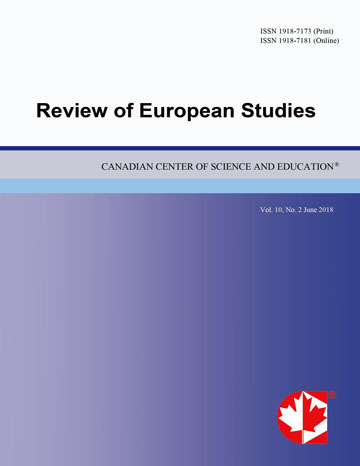Quasi-scientific Approaches Made by Impressionist Painters (Claude Monet) and Literary Naturalists (Emile Zola)
- Jie Chang
Abstract
The history of Europe witnessed the triumph of science, economic expansion, social improvement, and political progress in the middle decades of 19th Century. There emerged a new cultural trend of Positivism that matched with this progress and prosperity in the society. Naturalism in literature and impressionism in paintings, in abroad sense, both belonged to the Positivistic cultural movement. Emile Zola, a French Positivistic Realism-Naturalism novelist, took Impressionism as an ally of literary Naturalism in the search for quasi-scientific procedures and finding. In his defense of Impressionism, Zola declared, “Here then is what the Impressionist painter exhibit, exact research into the causes and effects of light, flowing in upon the design as well as the color”. (Note 1) This short paper, therefore, has tried to make a comparative study of quasi-scientific approaches made by literary Naturalists (Emile Zola) and Impressionistic painters (Claude Monet) and to address the reasons why Zola applauded Impressionism.Firstly, I have put Naturalism and Impressionism into the landscape of Positivistic cultural movement in the mid 19th century, trying to find out the roots for Zola’s taking Impressionism as an ally of Naturalism. Secondly, I have tried to concentrate on the Impressionism and the quasi-scientific approaches made by Impressionist painters like Claude Monet. In the following part, I have found similar scientific approaches in Zola’s works, especially in The Experimental Novel, and Nana. Thus, in the last part, I can conclude that the reasons why Zola took Impressionism as an ally of Naturalism are that they were both parts of Positivistic cultural movement, and both were trying to transfer science into literature and art.
- Full Text:
 PDF
PDF
- DOI:10.5539/res.v1n2p133
Index
- ACNP
- CNKI Scholar
- DTU Library
- Elektronische Zeitschriftenbibliothek (EZB)
- EuroPub Database
- Excellence in Research for Australia (ERA)
- Genamics JournalSeek
- Google Scholar
- Harvard Library
- HeinOnline
- Infotrieve
- JournalTOCs
- Mir@bel
- Open policy finder
- RePEc
- ResearchGate
- ROAD
- Scilit
- Technische Informationsbibliothek (TIB)
- The Keepers Registry
- Universe Digital Library
- WorldCat
Contact
- Paige DouEditorial Assistant
- res@ccsenet.org
